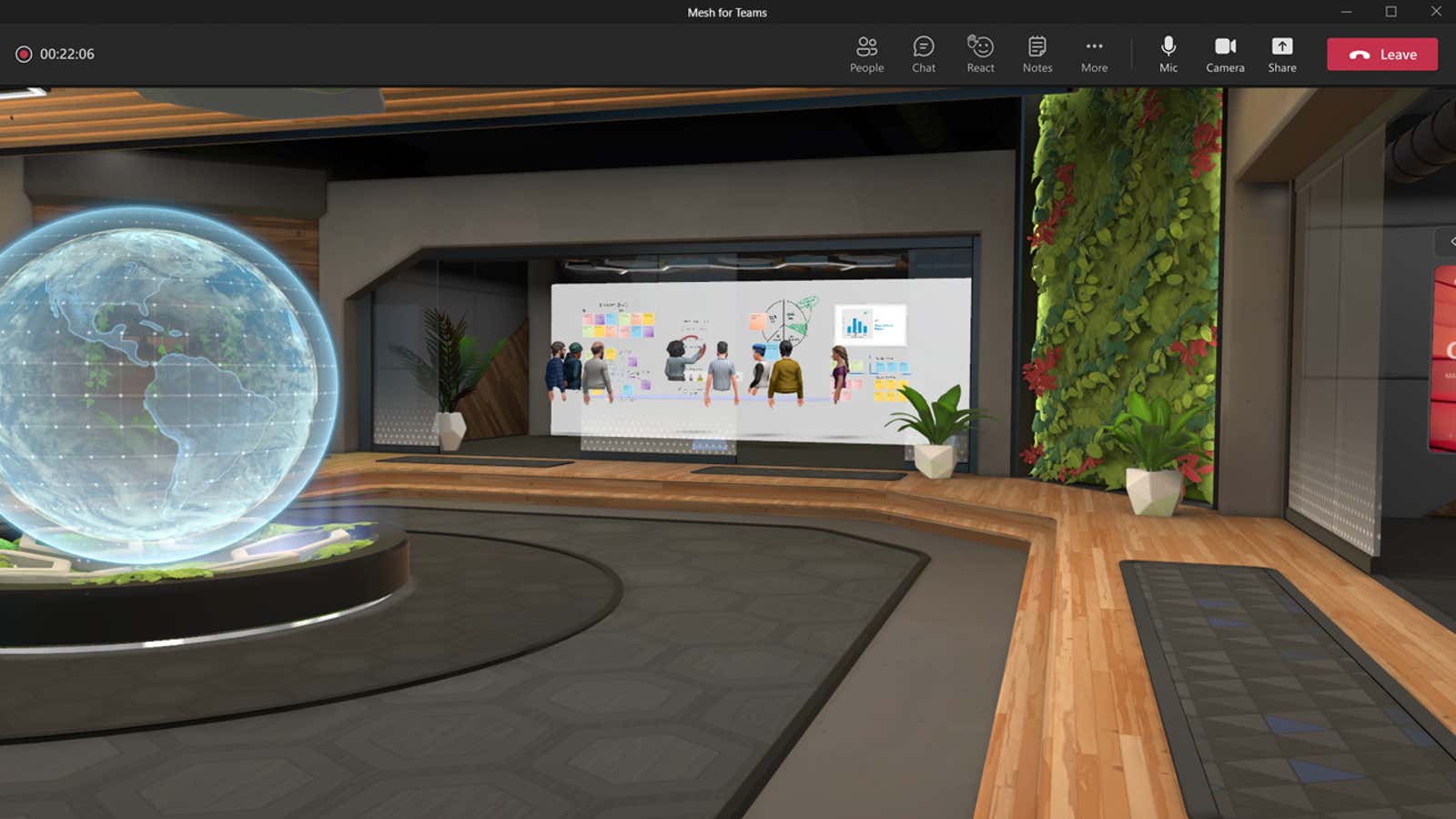Just days after Facebook became a “metaverse company” and rebranded to Meta, Microsoft is teasing its own metaverse plans.
The Redmond, Washington-based company plans to roll out Mesh for Teams starting in early 2022. Mesh, which was first announced in March, builds on existing Teams features like “Together mode” and “Presenter mode,” which make remote and hybrid meetings more collaborative and immersive. The updated product will allow organizations to create “metaverses” where people can collaborate in virtual environments that mimic physical offices and other shared spaces. Everyone in a meeting can be “present without being physically present using personalized avatars,” Microsoft’s VP of communications wrote in a Nov. 2 blog post.
The move is a smart one for Microsoft: Work is likely to be the main use case for the immersive internet—for a while at least—and more than 250 million people already use Teams. The company even has its first use case: Microsoft already built a virtual workplace environment for Accenture.
Another tweaked Microsoft product, Dynamics 365 Connected Spaces—yes, the name needs work—will be previewed in December. That tool is expected to provide analytics about people, places, and how the former interact with the latter. Organizations can, for instance, monitor safety and queue management on shop floors, or study foot traffic patterns and cashier queue lengths in retail spaces.
Is Microsoft’s metaverse like Facebook’s?
Unlike Facebook, which is eyeing a metaverse powered by virtual reality headsets, Microsoft seems focused on making the virtual world accessible via any device. The company says it won’t discriminate between laptops with a single microphone and a HoloLens headset with six microphones and 16 cameras.
In its first iteration, Mesh will ”take your audio and manifest that as facial expressions,” Katie Kelly, a principal project manager at Microsoft working on Mesh for Teams, said. Later, “the camera will insinuate where your mouth is and mimic your head and facial movements.”
For now, this sounds basically like a real-time Memoji. But that doesn’t make Microsoft’s metaverse less of one: VR is not a prerequisite.
Nor does Microsoft seem eager to compete with Facebook (sorry, Meta) in that realm. “Facebook is integrated across the entire value chain, with ownership of VR hardware leader Oculus,” Kay Khemani, managing director of broker-less trading platform Spectre.ai, told Quartz.
Perhaps most important, Microsoft’s target audience isn’t the teen and young adult generation Facebook has called its “north star.” The company is, as always, focused on enterprise users. “This pandemic has made the commercial use cases much more mainstream, even though sometimes the consumer stuff feels like science fiction,” CEO Satya Nadella said in an interview on Bloomberg Television.
That doesn’t mean Microsoft is all work and no play: It has metaverse plans for XBox and gaming, too. But at least at work, the metaverse won’t mean an escape from Microsoft Office and PowerPoint.
